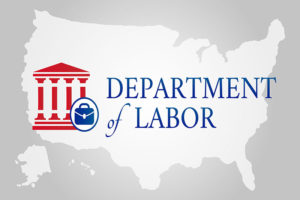Department of Labor Provides Guidance on Families First Coronavirus Response Act
 On March 24, 2020, the U.S. Department of Labor (DOL) issued its first guidance related to the Families First Coronavirus Response Act (FFCRA). Besides these FAQs, the agency stated it would soon issue implementation regulations pertaining to the new law
On March 24, 2020, the U.S. Department of Labor (DOL) issued its first guidance related to the Families First Coronavirus Response Act (FFCRA). Besides these FAQs, the agency stated it would soon issue implementation regulations pertaining to the new law
To assist employers and employees, we’ve summarized the key points.
Effective Date
As a surprise to many, the DOL announced that the paid leave provisions of the FFCRA become effective April 1, 2020, not April 2, 2020, and will apply to leave taken between April 1, 2020, and December 31, 2020. The likely motivation for moving up the date was to align the leave with the calendar quarter.
The DOL also clarified that the paid sick leave and expanded family and medical leave requirements are not retroactive. Therefore, only leave provided on or after April 1, 2020, qualifies under the FFCRA.
Small Business Exemption
The DOL provided little additional information regarding the exemption for companies with fewer than 50 employees. The guidance indicates this will be addressed in more detail in forthcoming regulations. Also, small businesses should not send any materials to the DOL when seeking a small business exemption for paid sick leave and expanded family and medical leave.
Employee Count Calculation
Both of the FFCRA’s leave provisions apply to private employers with fewer than 500 employees, but the determination of that number has repeatedly been questioned.
The DOL’s guidance states:
You have fewer than 500 employees if, at the time your employee’s leave is to be taken, you employ fewer than 500 full-time and part-time employees within the United States, which includes any State of the United States, the District of Columbia, or any Territory or possession of the United States. In making this determination, you should include employees on leave; temporary employees who are jointly employed by you and another employer (regardless of whether the jointly-employed employees are maintained on only your or another employer’s payroll); and day laborers supplied by a temporary agency (regardless of whether you are the temporary agency or the client firm if there is a continuing employment relationship). Workers who are independent contractors under the Fair Labor Standards Act (FLSA), rather than employees, are not considered employees for purposes of the 500-employee threshold.
Typically, a corporation (including its separate establishments or divisions) is considered to be a single employer and its employees must each be counted towards the 500-employee threshold. Where a corporation has an ownership interest in another corporation, the two corporations are separate employers unless they are joint employers under the FLSA with respect to certain employees. If two entities are found to be joint employers, all of their common employees must be counted in determining whether paid sick leave must be provided under the Emergency Paid Sick Leave Act and expanded family and medical leave must be provided under the Emergency Family and Medical Leave Expansion Act.
In general, two or more entities are separate employers unless they meet the integrated employer test under the Family and Medical Leave Act of 1993 (FMLA). If two entities are an integrated employer under the FMLA, then employees of all entities making up the integrated employer will be counted in determining employer coverage for purposes of expanded family and medical leave under the Emergency Family and Medical Leave Expansion Act.
The DOL adopts a snapshot approach based on the time an employee takes leave. The DOL implicates the FLSA’s “joint employer” test and indicates that when two companies are considered joint employers, all common personnel are counted.
Additionally, the DOL states that if two entities are an “integrated employer” under the Family Medical Leave Act, all of the employees of the integrated employer will be counted in determining employer coverage for purposes of the expanded medical leave.
For questions about either the “joint employer” test or the “integrated employer” test, please contact us.
Rate Calculation
When calculating the compensation due to employees, the FFCRA requires an employer to pay employees for the hours each would have normally been scheduled to work — even if that exceeds 40 hours per week. However, the law also caps the number of hours for employers to 80 for a two-week period. Therefore, if an employee works 50 hours per week, the employer must pay 50 hours for week one, but only 30 hours in week two.
Double-Dipping
Many employers wonder if employees are entitled to both paid sick leave and expanded medical leave. The DOL stated that employees may be eligible for both types of leave, but only for a total of twelve weeks of paid leave. Notably, the expanded medical leave imposes a 10-day unpaid period while paid sick leave starts immediately.
The DOL clarified that the sick leave period may cover the first ten workdays of the expanded family and medical leave unless the employee elects to use existing vacation, personal, or medical or sick leave. After the first ten workdays have elapsed, the employee will receive two-thirds of their regular rate of pay for the hours you would have been scheduled to work in the subsequent ten weeks under the expanded medical leave.
We Will Continue to Monitor Developments
Kreis Enderle’s employment attorneys pledge to keep you updated on the rapidly developing Coronavirus situation. Employers should note that further guidance and regulations are anticipated, but we hope this summary is useful to assist you in preparing for the upcoming changes.